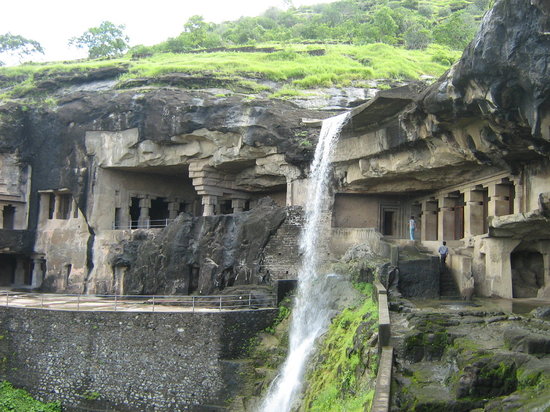
General information:
Project: Ellora cave temple complex (Ellora Caves) Location : Verul village, Khulatabad taluk subdivision, Aurangabad district, Maharashtra state, India ( N20 1 35,004 E75 10 45,012) Architectural design: Regulation tissue: Complex includes 34 caves Year of formation: 600- 1000 AD Value: World Heritage (1983; categories i; iii; vi)
India (India) is a country in South Asia, with an area of 3,287,263 km2 (ranked 7th in the world); The population is about 1324 million people (2016).
India borders the Indian Ocean to the south, the Arabian Sea to the southwest, the Bay of Bengal to the southeast, and Pakistan to the west; with China, Nepal, and Bhutan in the Northeast; Myanmar and Bangladesh are in the East. In the Indian Ocean, India neighbors Sri Lanka and the Maldives; India’s Andaman and Nicobar Islands share maritime borders with Thailand and Indonesia. The Indian subcontinent is where the ancient Indus Valley Civilization emerged, with historic trading routes and vast empires, rich in trade and culture. chemistry.
In the 3rd century BC (BC), large cities appeared here with a population of tens of thousands of people, planned with complex drainage and water supply systems, fired brick houses, and new techniques. in handicraft and metallurgical activities… Social stratification, based on class, appeared in the first millennium BC. The earliest political centralization took place during the Maurya empire (Maurya Empire, which existed in the period 322 – 187 BC); Shunga Empire (Shunga Empire, existed in the period 187-78 BC) and Gupta Empire (Gupta Empire, existed in the period 319 to 550).
During the period from the 3rd century BC to the 13th century AD, many kingdoms of India existed in the Indian Subcontinent. These kingdoms had a huge influence on the culture of the surrounding region, spreading as far as Southeast Asia.
This is also the origin of four major endogenous religions:
Hinduism is one of the oldest religions in the world, originating from South Asia (India, Pakistan, Bangladesh). ), is a fusion or synthesis of different traditional Indian civilizations and has no founder; Formed from 500 BC to 300 AD, after the end of the Vedic period (1500 – 500 BC), thriving in the Middle Ages, along with the decline of Buddhism in India. Hinduism includes religious groups that are philosophically distinct, but linked by common concepts, rituals, cosmology, Hindu textual resources (treatises on theology, philosophy, mythology, Vedas, Yoga, rituals, ways of building temples) and the practice of pilgrimage to sacred sites. The four largest sects of Hinduism are Vaishnavism, Shaivism, Shaktism and Smartism. Buddhism was founded by Buddha Shakyamuni (Siddhartha Gautama/Siddhartha Gautama, 624 BC – 534 BC). Later it divided into many branches: Theravada Buddhism (Theravada, Theravada, Theravada); Mahayana Buddhism (Northern School, Mass); Shingon Buddhism (Tibetan, Tantra, Vajrayana).
Jainism (Jainism/Jainism) was founded by Lord Jina Mahavira (599 BC – 527 BC) in North India with a philosophy and practice method based on personal efforts to reach Nirvana ; Sikhism was founded by Guru Nanak (April 15, 1469 – September 22, 1539) in the 15th century in the Punjab region , between Pakistan and India .
In addition, foreign religions also appeared here such as: Judaism (Judaism), Zoroastrianism (a religion founded by the prophet Zoroaster around the end of the 7th century BC in the Eastern Persian Empire). antiquity, Christianity and Islam. These religions were brought to India in the first millennium AD, adding to the diverse culture of the region.
In the Middle Ages, most of Northern India belonged to the Delhi Sultanate, which lasted for about 320 years (1206-1526); Southern India is divided into many small kingdoms, for example: Vijayanagara Kingdom (Vijayanagara Empire): located on the Deccan Plateau, existed from 1336 – 1646; Eastern Ganga dynasty: located in the eastern coastal area, between the Mahanadi and Godavari rivers, existed in the 11th – early 15th centuries
. In the 16th century, the Mughal Empire (Mughal Empire, 1526 – 1857) formed and conquered small kingdoms, expanding its territory to almost the entire Indian subcontinent and part of Afghanistan with a population of up to 150 million people at its peak. The Indian subcontinent was gradually annexed by Britain and moved under the management of the British East India Company since the early 18th century, then under direct British management since the mid-19th century.
India became an independent country in 1947, after the struggle for independence led by Mahatma Gandhi (October 2, 1869 – January 30, 1948). Today India is a federation, consisting of 29 states and 7 union territories. Below the state are the administrative units: districts (districts, zones); subdivisions and villages.
Maharashtra is a state located in Western India, bordering the Arabian Sea (Arabian See), the capital is the seaport city of Mumbai, formerly known as Bombay. Aurangabad is a tourist city in Aurangabad district, Maharashtra state, surrounded by many World Heritage Sites, including Ajanta Caves and Ellora Caves. .
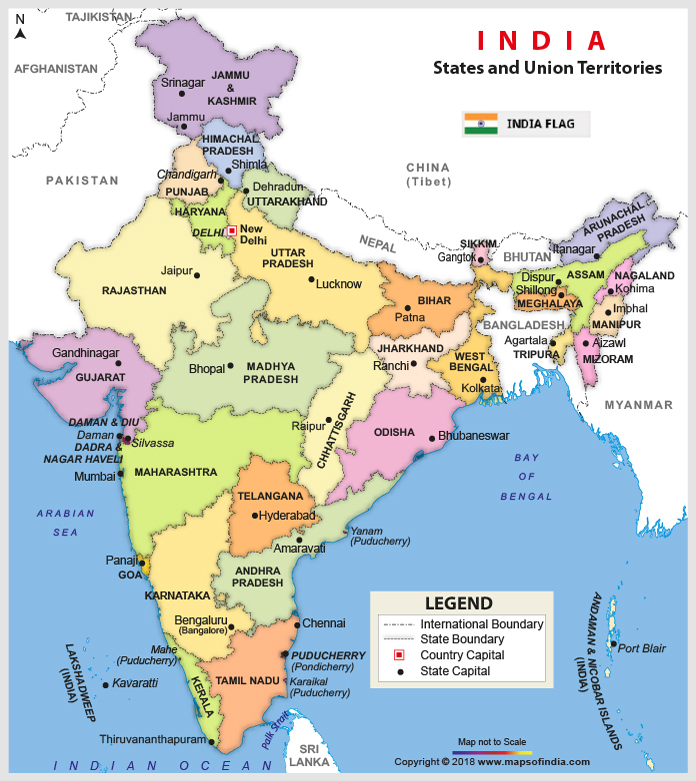
Map of India and location of Maharashtra state in western India
The Ellora cave temple complex is located 29km northwest of Aurangabad city, Maharashtra state; about 100 km west of the Ajanta Cave Temple Complex; 300 km northeast of the port city of Mumbai.
Ellora is a relatively flat area of the Sahyadri Mountains, also known as the Western Ghats. This is a place of volcanic activity in ancient times, eruptions created many layers of basalt, forming the Deccan plateau.
The location of the Ellora Cave Temple Complex is related to the ancient South Asian trade route, connecting the center of the Indian subcontinent to the port city of Mumbai to the Arabian Sea. This is not only the location of a shrine, a monastery and a stopping place for pilgrims with the purpose of spreading and popularizing religion, but also became a center serving commercial purposes (a place to pray for good luck). lucky for trade) important in the Deccan plateau region of southern India.
The Ellora temple complex is carved into basalt cliffs and is one of the largest artificial stone cave architectural complexes in the world with statues, sculptures, Buddhist, Hindu, and religious paintings. Jainism, dating back to 600-1000 AD.
More than 100 caves have been excavated in the hill named Charanandri (Charanandri Hills), 34 of which are open to the public to visit, including: 12 Buddhist caves (Cave symbols 1 to 12); 17 Hindu caves (Cave 13-29) and 5 Jain caves (Cave 30-34). Each group of caves represents the gods, saints and mythologies prevalent in the 1st millennium AD and is also the shrine and monastery of each respective religion.
These caves were built close together and illustrate the religious harmony that existed in ancient India.
All the monuments of the Ellora Caves were built during the Middle kingdoms of India .India). Regarding the time of construction, there is an opinion that: Buddhist and Hindu cave temples and pagodas were built during the Kalachuri dynasty (Kalachuri dynasty, ruling in the western central part of the Indian subcontinent in the middle of the 19th century). 6- 7) and the Rashtrakuta dynasty ( Rashtrakuta dynasty , which ruled much of the Indian Subcontinent between the 6th and 10th centuries); Jain temples were built during the Yadava dynasty ( Yadada/Seuna dynasty, which ruled the western part of the Indian subcontinent between the 9th and early 14th centuries).
Funding for construction was provided by royalty, merchants and wealthy people of the region.
Ellora Caves are caves that simulate temples, pagodas, and monasteries carved into the rock, including from the basement below to the tower above; spatial chains from the porch and altar to the main hall and surrounding auxiliary spaces. Everything is carved or cut into the rock according to the top-down principle.
In the 34 Ellora caves there are many carvings and paintings on rocks.
Many of the caves in the Ellora Cave Temple Complex are very famous.
Cave 16 or Kailasanatha Temple is the largest monolithic structure in the world; shaped like a chariot dedicated to Shiva (the Supreme Being, the God of Destruction, one of the three supreme gods of Hinduism – Trimurti, along with Brahma – God of Creation and Vishnu – God of Protection) . Kailasanatha Temple is also considered an encyclopedia of Indian cave architecture due to its successful synthesis of long-standing traditions of cave carving in Western and Southern India with the participation of craftsmen from other regions. in India, is considered a national style.
Caves The Ellora cave complex also has many inscriptions (named Ellora Inscriptions) of kings, monks and donors.
The Ellora cave temple complex , abandoned for a millennium, was discovered in 1819 (found by British officers during a tiger hunt).
The Ellora cave temple complex in Aurangabad, Maharashtra state, India was honored by UNESCO as a Cultural Heritage (in 1983) with the following criteria:
Criterion (i): Ellora cave temple complex in Aurangabad, Maharashtra state, India Do was built without interruption from 600 to 1000 AD, including 34 temples and monasteries. The structures are carved entirely into a basalt cliff stretching more than 2 km, and are masterpieces of human creative talent in the fields of architecture, construction technology, Buddhist art, Hinduism and Jainism. , had a great influence on subsequent Indian art.
Criterion (iii): The Ellora Ajanta cave temple complex, including Buddhist, Hindu and Jain temples and monasteries, carved into rock is evidence of ancient Indian civilization. This is not only a unique creation of art and technology, but also illustrates the cultural spirit of tolerance typical of ancient India.
Criterion (vi): The Ellora cave temple complex displays sculptures and paintings representing events, characters, beliefs and art associated with the three religions of Buddhism, Hinduism and Jainism. Location of the caves at the Ellora Cave Temple Complex Heritage Site

Buddhist relics (Cave symbols 1- 12) occupy the southern part of the Complex. Hindu relics (Cave 13-29) are located in the middle part of the complex. Jain relics (Cave 30-34) separate into a cluster located in the northern part of the Complex. Below are summaries of some prominent caves.
Buddhist Relics (Part 1)
Caves 1-12 are Buddhist cave temples. Cave number 10 is the shrine (Chaitya), the remaining caves are meditation monasteries (Vihara). Buddhist caves were built around 630-700 or 600-730. The
earliest Buddhist cave built was Cave symbol 6, then 5, 2, 3, 5, 4, 7, 8 , 10 and 9. Caves marked 11 and 12 were built last.
The shrine is a place to worship Buddha, usually with a narrow rectangular plan, a high dome-style ceiling (Chaitya Hall) and one end is a stupa. The temple cave structure usually has a porch, a hall, a main hall with a stupa or an altar room. On the surface of the cave, the columns supporting the ceiling are decorated with reliefs.
The Zen monastery is not only a residence for lay people, but also a storage facility for grain, water and food for visitors. The structure of a monastery cave usually has a square plan, a symmetrical layout, including a central space (main hall) and surrounded by small niches or caves, where beds are carved into the rock. The monastery cave also has an altar room, where statues of Buddha, Bodhisattvas and saints are placed. On the surface of the cave, the columns supporting the ceiling are decorated with reliefs.
Caves marked 5, 10, 11 and 12 are architecturally important Buddhist caves . The distinction between the cave’s architectural style is not only from the layout and sculpture but also from the way the columns are decorated.
Cave symbol 1
Cave 1 (Cave 1) is a meditation cave (Vihara), located at the first location, south of the complex. The cave has a structure including:
Porch deep into the cliff with pillars supporting the porch (currently only ruins remain, being restored);
The main hall has a square plan; 8 rooms for lay people are arranged on the North and East sides of the hall with dimensions of 12.5m wide and 12.8m deep; An incomplete room is located outside the cave.
Cave 1 is a simple Buddhist relic, there are no columns here.

Cave 1: Cave floor plan
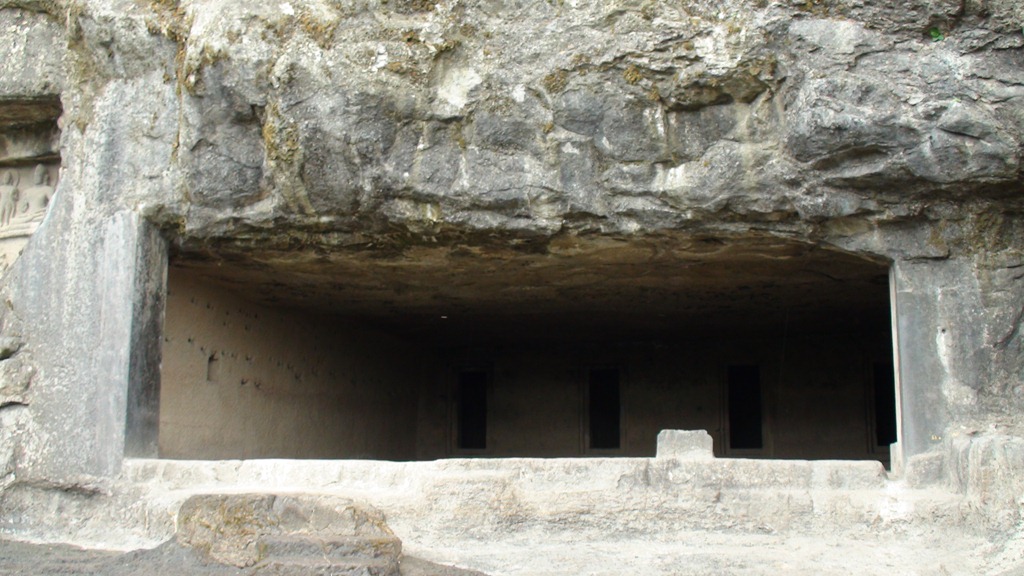
Cave 1: Front
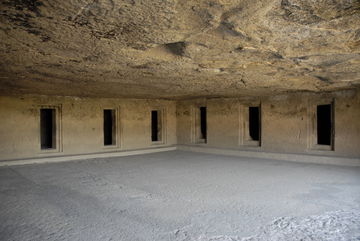
Cave 1: Inside the main hall with doors to the lay people’s rooms.
Cave symbol 2
Cave 2 (Cave 2) has a typical floor plan of a Zen monastery cave (Vihara), including:
Narrow width porch without columns.
The main hall has a square floor plan, surrounded by rows of 12 columns. Columns according to height are divided into 4 segments: The lower segment or column pedestal has a square cross section with decorations at the upper border; The middle section or body of the column has an octagonal or circular cross section with decorative reliefs; The upper part or head of the column has a flat spherical shape with decorative edges. The top part is the column cap or column top plate to support the simple T-shaped ceiling, without decoration.
There are no separate rooms for monks here, but they live together in two corridors on both sides. Behind the hall there are 3 rooms, a main worship room with a sitting Buddha statue and 2 small worship rooms on both sides. The walls around the main hall are decorated with reliefs of Buddha statues and apostles according to Buddhist legends.
Perhaps the cave was converted from a monastery into a shrine.
Cave 2: Floor plan Cave 2: Front view
Cave 2: Main hall Cave 2: Main worship room
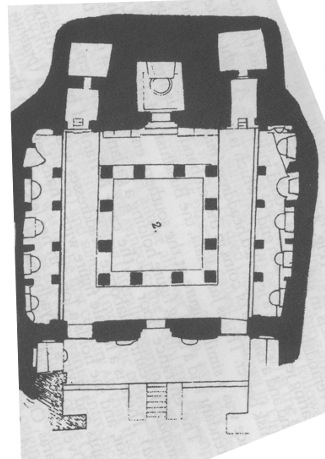
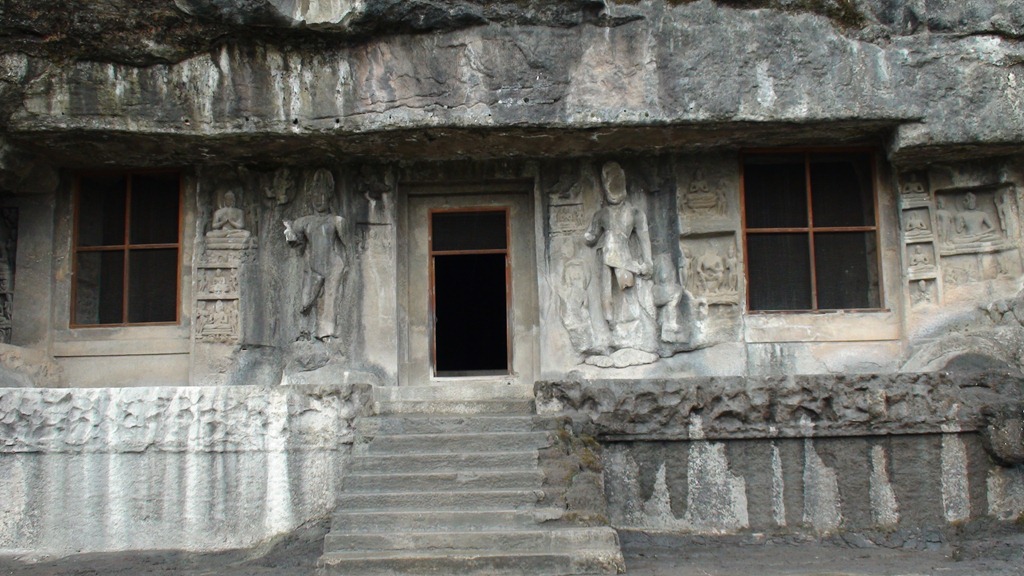
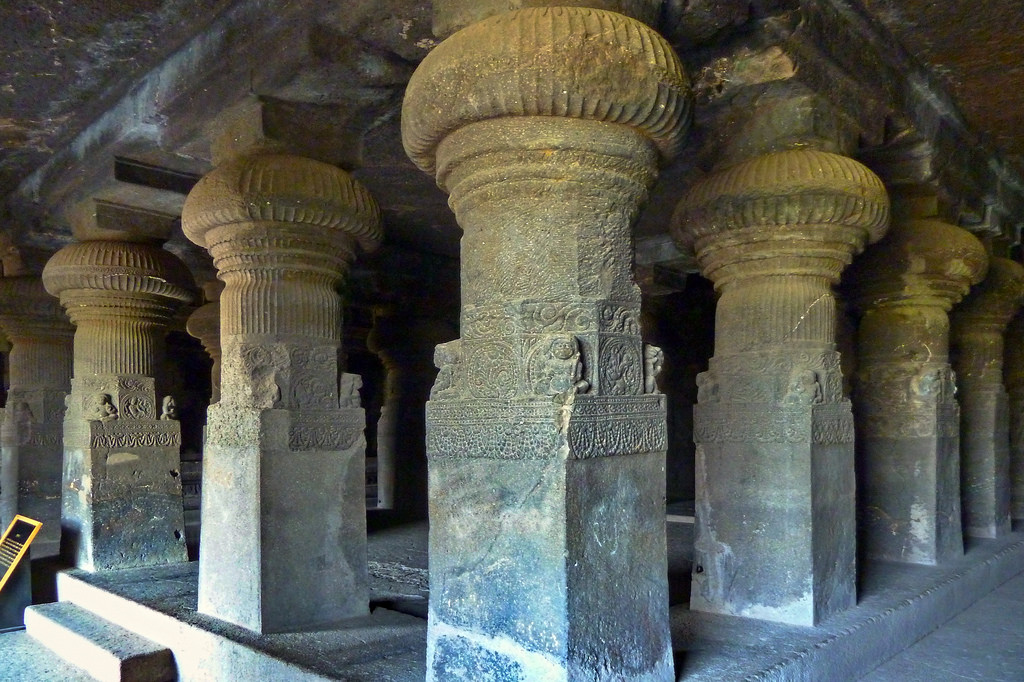
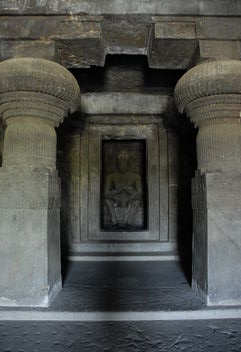
Cave symbol 3
Cave 3(Cave 3) has a typical floor plan of a Zen monastery cave (Vihara), including:
The porch of the cave only remains, the roof has been completely damaged.
The central space or main hall has a square plan, measuring 13.7m x13.7m, 3.35m high, surrounded by 12 columns. Columns according to height are divided into 4 segments: The column base has a square cross-section that gradually narrows with height; The column body is very short, has a circular cross-section with vertical edge decorations; The column head is a flat sphere with decorative edges like column ears at the 4 corners; The top plate of the column supporting the ceiling is a rectangular block with decorative sculptures.
Surrounding the central space is a corridor with 11 rooms for lay people and an altar room in the middle.
The walls along the corridor surrounding the main hall are decorated with reliefs of Buddha and apostle statues according toBuddhist stories.
Cave 3: Ground level
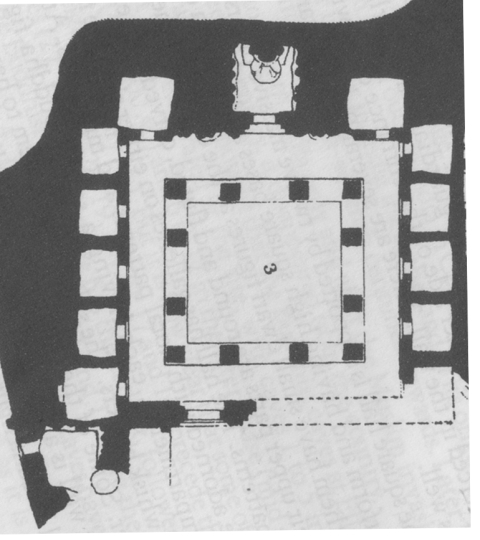
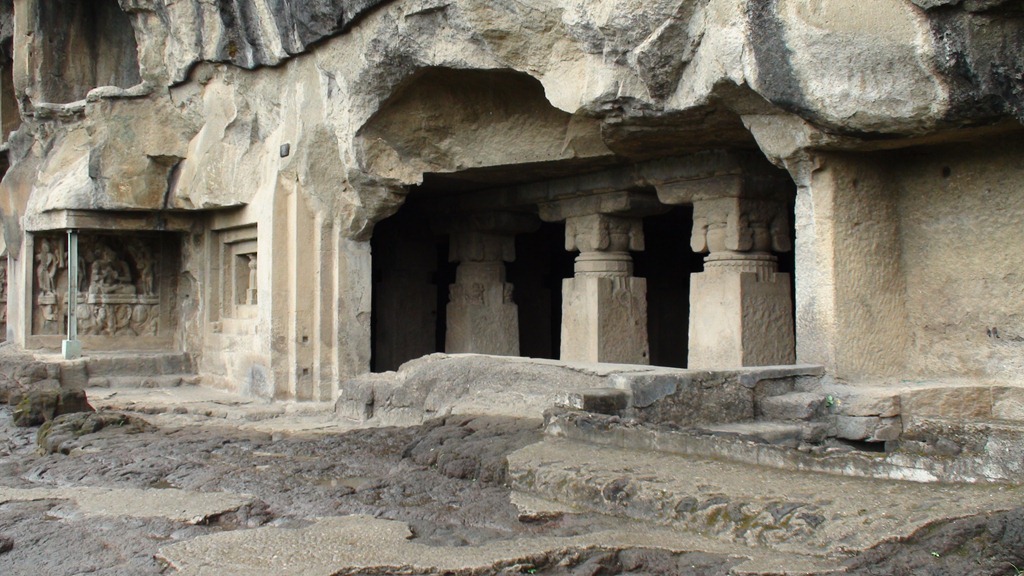
Cave 3: Front
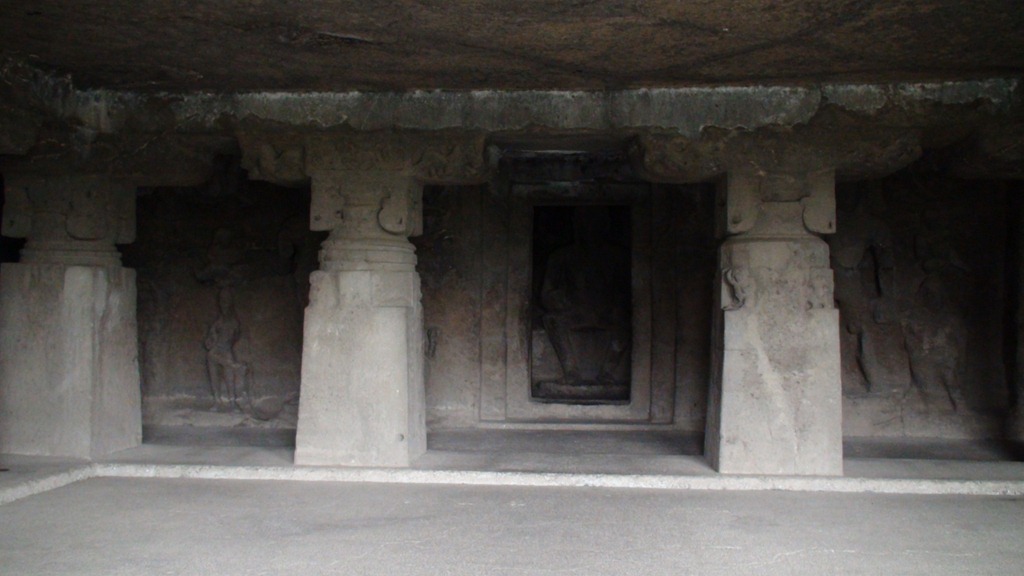
Cave 3: Interior of the main hall and worship room
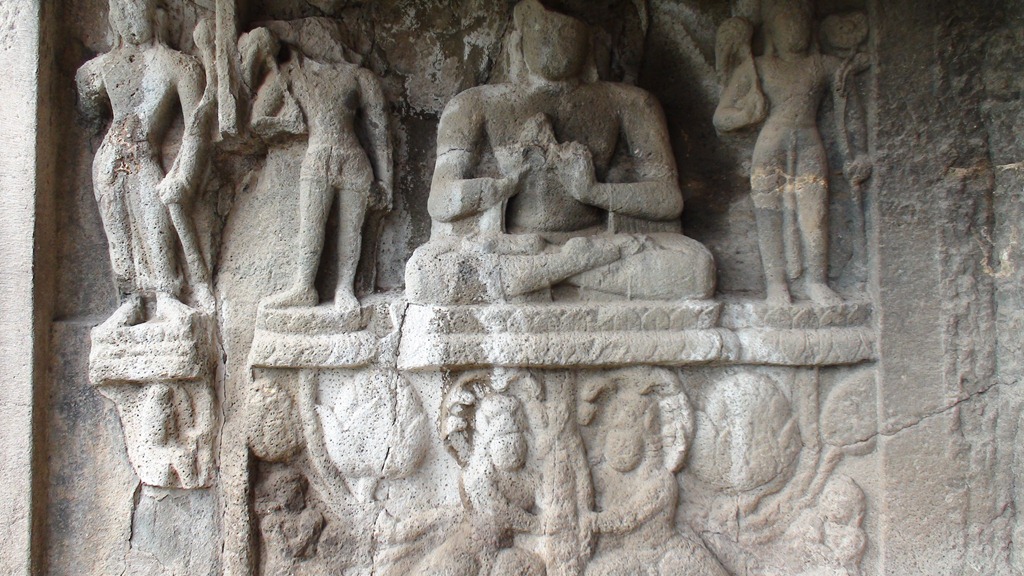
Cave 3: Reliefs decorate the walls on both sides of the main hall
Cave symbol 4
Cave 4 (Cave 4) Zen monastery cave (Vihara), including:
Main hall, 10.6m wide, 12.2m deep, but currently only half remains, possibly due to landslides and has not been completed. wall.
Behind the main hall is an anteroom with 2 columns and 3 rooms. The column of Cave 4 is similar to the column of Cave 3, the difference is that the top plate of the column is just a box-shaped block as big as the lower column.
The main room in the middle of the hall is the worship room. Inside the worship room there is a Buddha statue sitting under a tree, flanked by Bodhisattvas on both sides.
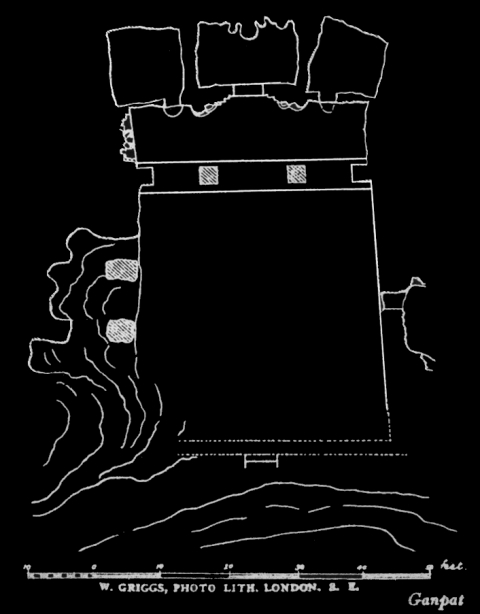
Cave 4: Cave floor plan
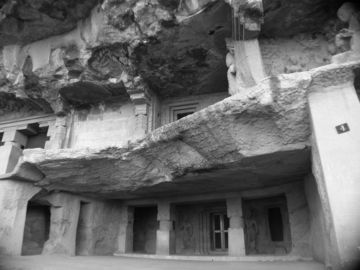
Cave 4: Ruins in front of
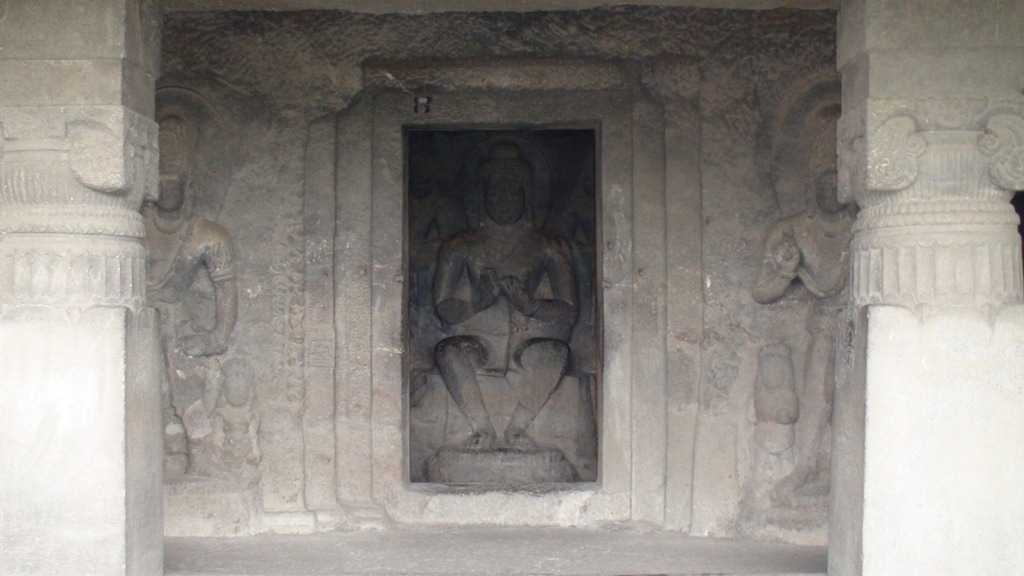
Cave 4: Interior of the worship room
Cave symbol 5 – Mahawara Cave Pagoda
Cave 5 (Cave 5/MahawaraCave) is a large-scale meditation cave (Vihara). Above is a waterfall that falls during heavy rain. The cave includes: The yard in front of the cave, currently eroded, only one corner remains. The main hall has a rectangular floor plan extending like a hall with dimensions of 35.7m x 17.7m. Inside there is a pair of low chairs or tables placed parallel in the middle, believed to be a dining or meeting place for lay people. Around the main hall there are 24 columns. Column shapes are diverse. The outermost column has the same shape as the column of Cave 3 with the top of the column having 4 column ears at the corners. The column inside the hall is shaped like the column of Cave 2 with the column head like a flat sphere. On both sides of the main hall are 22 rooms for lay people and a side hall. Inside is a worship room with a Buddha statue inside.
Cave 5: Ground level
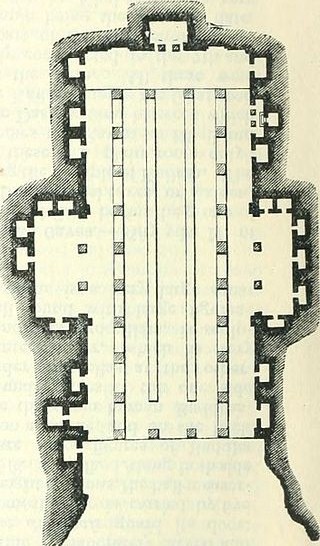

Cave 5: Front, below the waterfall
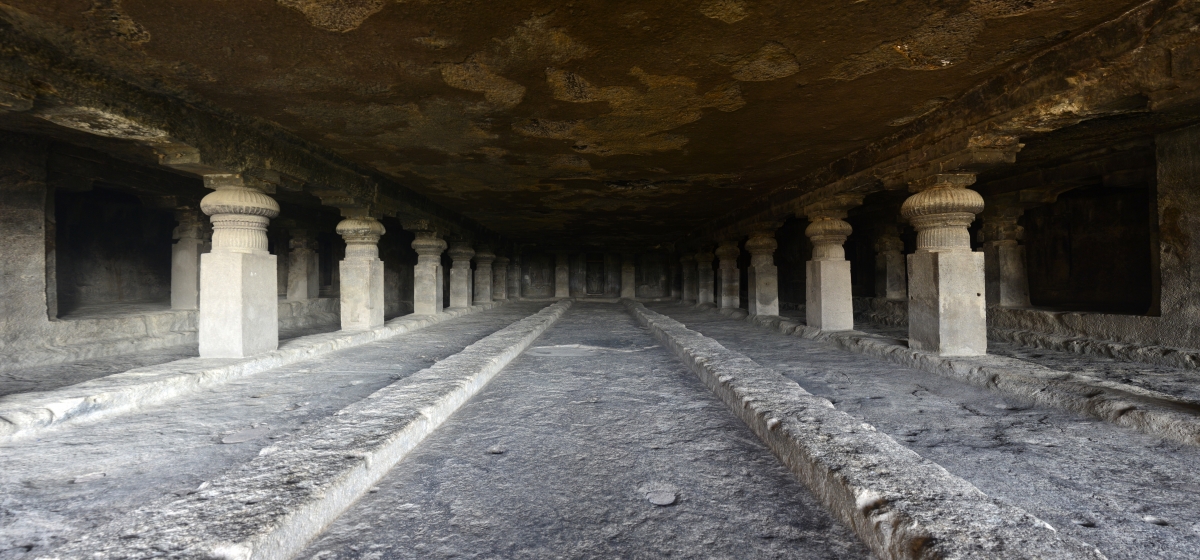
Cave 5: The main hall has a rectangular floor plan with two rows of stone chairs
Cave symbol 6
Cave 6 (Cave 6) is a monastery cave (Vihara) with a layout like a composite of the monastery and the shrine. The shrine is located in the center and two monasteries are located on both sides.
The shrine includes: The porch and hall are now completely damaged; The worship hall is limited by 2 rows of columns of 2 monasteries on both sides. In the innermost is the shrine with a vestibule with 2 columns and an altar room with statues of Buddha, Bodhisattva, and goddesses.
The monastery on both sides of the shrine has a similar structure, but the cave on the right has been completely damaged in the front. Basically, the monastery consists of: A porch with 4 columns supporting the porch; The main hall has a square floor plan, is 8.5m wide and 7.6m deep. The monastery on the left has 6 rooms; The monastery on the right has 4 rooms.
There are two types of columns in the cave:
Columns at the shrine (similar in shape to columns in Cave 3) are divided by height into 4 segments: The column pedestal has a square cross-section, the top corner is decorated; The column body is very short, has a circular cross-section with vertical and horizontal edge decorations; The column head has a spherical shape with decorative edges like column ears at the 4 corners; The column top plate is a rectangular block with decorative sculptures.
The column in the meditation hall is smaller in size than the column in the shrine. According to height, it is divided into 4 segments: The column base has a square cross-section; The column body has a circular cross-section with vertical and horizontal edge decorations; The column head has a flat spherical shape with decorative edges; The column top plate is a rectangular cross-section beam that connects the four ends of the column.
Inside the walls there are many sculptures.
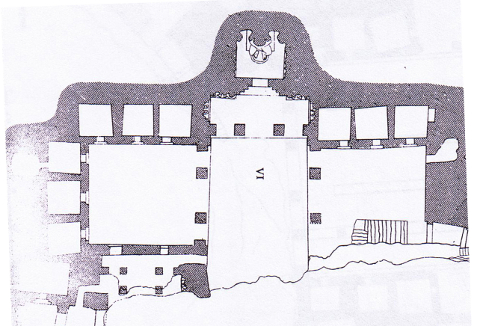
Cave 6: Cave floor plan

Cave 6: Front view, looking at the main hall and shrine
Cave 6: Front view of the monastery lobby on the left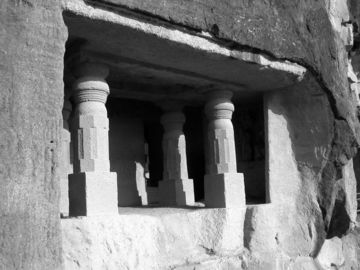
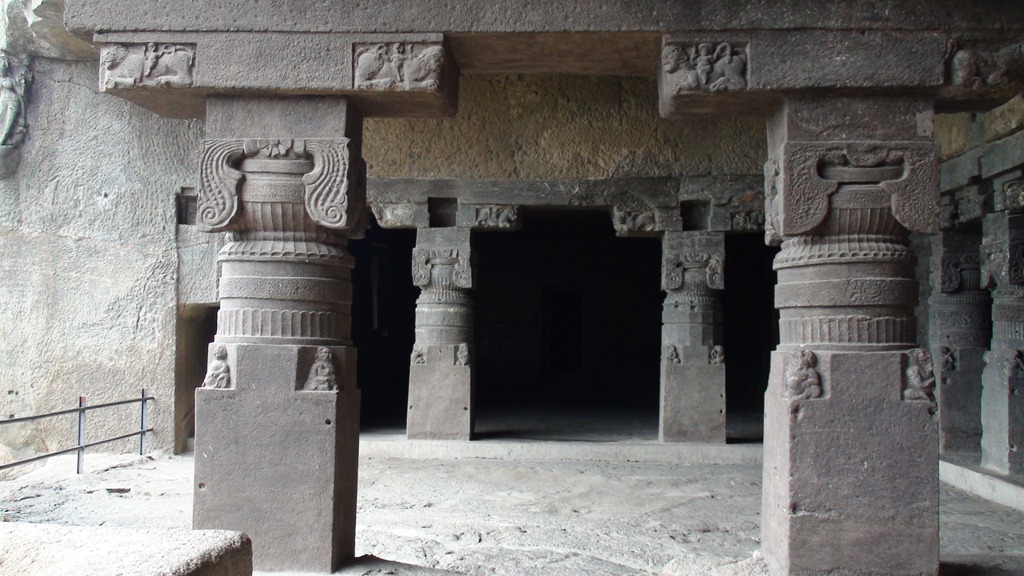
Cave 6: The porch between the two caves and the temple lobby
Cave symbol 7
Cave 7 (Cave 7) is a monastery cave (Vihara) located below Cave 8.
The cave has a simple floor plan, no porch, only 3 doors (the right door has been eroded).
The main hall of the cave is square with 4 columns supporting the ceiling. Around the main hall there are 12 rooms, which are the residences of lay people, of which only 3 rooms are completely built with a square floor plan, the rest are small niches. There is no worship room in the cave, only a few goddess reliefs.
The columns in the cave are similar to those of Cave 3, but the base of the column is simple with a square cross-section, without decoration.
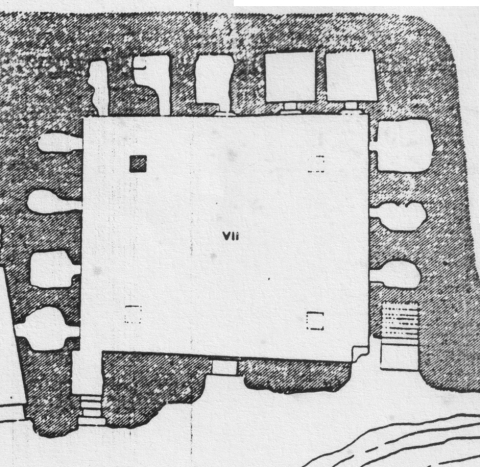
Cave 7: Cave floor plan

Cave 7: Front view
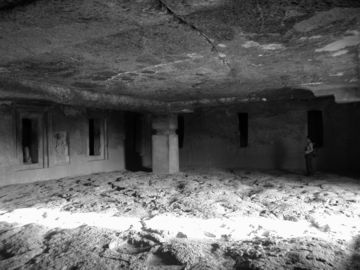
Cave 7: Main hall with doors to living rooms.
Cave symbol 8
Cave 8 (Cave 8) is a monastery cave (Vihara) located below Cave 9.
The cave is surrounded by cliffs so there is no front.
In front of the cave there are two rooms, one of which has a porch with 2 columns supporting the ceiling.
The inside of the cave is arranged like a combination of a monastery and a shrine.
The front part is the monastery with a square-shaped main hall with 4 columns supporting the ceiling.
The back part is the shrine with the center being a stupa with a corridor surrounding it. On both sides of the monastery and the shrine are 7 living rooms for lay people, of which one room has a circular floor plan.
The columns in the cave are similar to those of Cave 3, but the base of the column is simple with a square cross-section and some columns have an additional ledge at the base of the column.
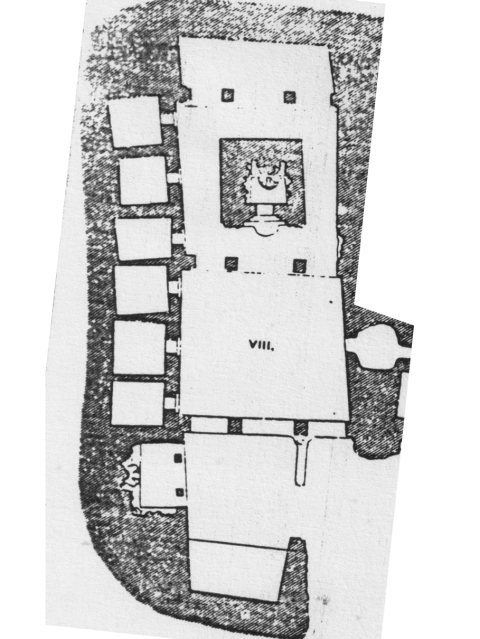
Cave 8: Cave floor plan
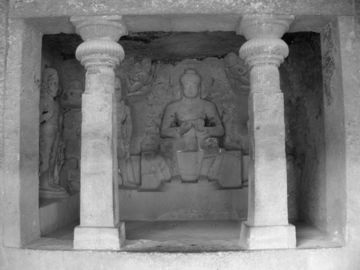
Cave 8: Worship room in front of the cave with Buddha statue relief

Cave 8: Interior of the monastery hall, inside is the shrine space with the stupa located in the center
Cave symbol 9
Cave 9 (Cave 9) is a meditation cave (Vihara) located above Caves 7 and 8. This is a small-scale meditation cave, including: Main hall attached to a porch with 2 columns; A centralized living room for lay people; Inside are 3 altar niches.
The special feature of the cave is mainly the elaborately decorated facade with 6 seated Buddha statues inside S-shaped arches (Gavaksha), standing Buddha statues and patterns. The columns of the facade have the same shape as the columns of Caves 3 and 6, decorated with reliefs on the entire body of the column with an octagonal cross section.
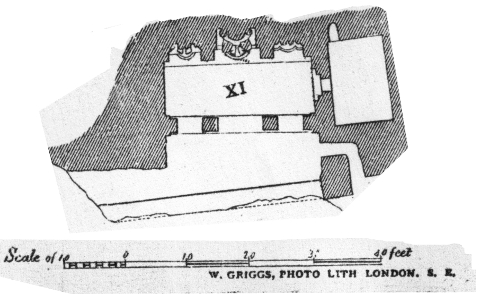
Cave 9: Ground level
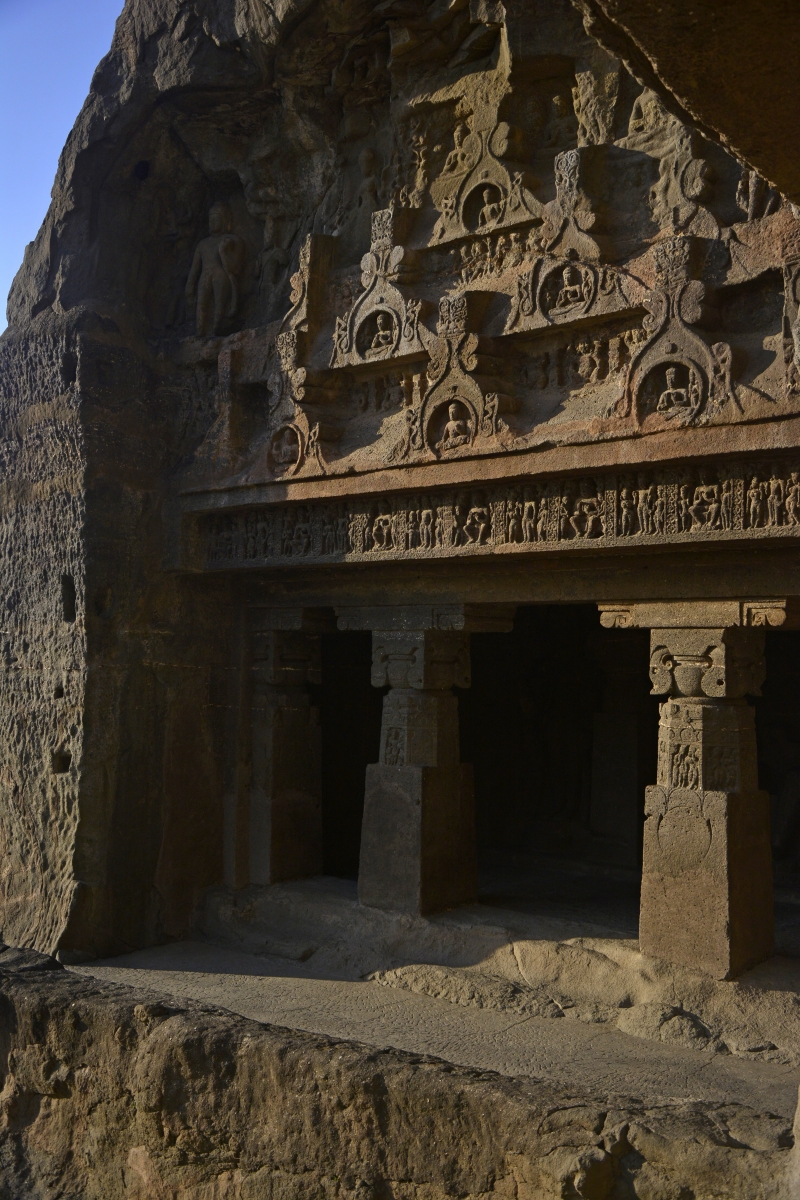
Cave 9: Front side with decorated Buddha statues and patterns
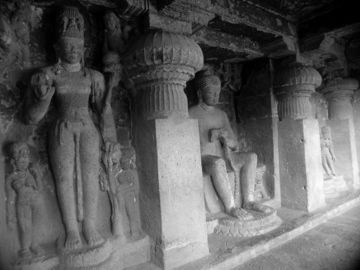
Cave 9: Decorated Buddha statues inside 3 altar niches.
Cave symbol 10 – Vishvakarma Cave Pagoda
Cave 10 (Cave 10/Vishvakarma Cave) is one of the most prominent caves in the group of Buddhist relics. The cave is a large shrine (Chaitya) combined with a monastery (Vihara), built around the year 650. The cave is named after the god Vishvakarman, the symbol of the universe, the starting point of all things, before time. The cave is 2 floors high. The first floor is the shrine, the second floor is the monastery. The first floor includes:The porch in front of the cave cuts deep into the cliff, forming a U shape. In front of the porch there is a room with 3 small columns. Inside the porch there are 12 large columns. From the porch there are small rooms surrounding, including two worship rooms with small vestibules. Inside the porch is a shrine with a rectangular surface 25.9m long, 13.1m wide, 10.3m high. Apsidal ceiling. The underside of the stone dome is cut into faux wooden frames or ribs to highlight the height of the cave dome. Therefore, this cave is also called “Carpenter’s Cave”. The bottom or base of the dome is decorated with the snake goddess Naga and figures such as dancers and musicians. Surrounding the main hall is a row of 30 columns 4.3m high, including 28 octagonal columns and 2 square columns. At the end of the main hall is a stupa 4.8m in diameter and 8.2m high. In front of the stupa is a sculpture forming a 5.2m high arch. Inside the dome is a sitting Buddha statue in a preaching position, about 3.4 meters high, with two dharma protectors on both sides. Behind the Buddha statue is a carved Bodhi tree. The 2nd flooroverlaps the U-shaped porch of the 1st floor, including: U-shaped hallway like the 1st floor and 6 rooms for residents. In the middle is an altar room and 2 altar niches on both sides. Cave 10 has many decorative carvings, from the exterior porch to the interior with Hindu motifs such as the goddess Apsara and meditating monks. The surface of the second floor of Cave 10 has arched windows (gavaksha/chandrashala), a type of arch created by 2 or more curves forming an S shape or many sharp peaks (ogee gothic). Cave 10 basically has two types of columns: Columns in the shrine: are columns with a simple shape, according to height, including only 2 segments: Octagonal or square column body and column cap (no column pedestal). and column top plate). Column at the porch: has a similar form to the column at Cave 3, divided into 4 segments: The column base has a square cross-section; The column body is very short, has a circular cross-section with vertical and horizontal edge decorations; The column head is a flat sphere with decorative edges like column ears at the 4 corners; The column top plate supporting the ceiling is a block with a rectangular cross section.
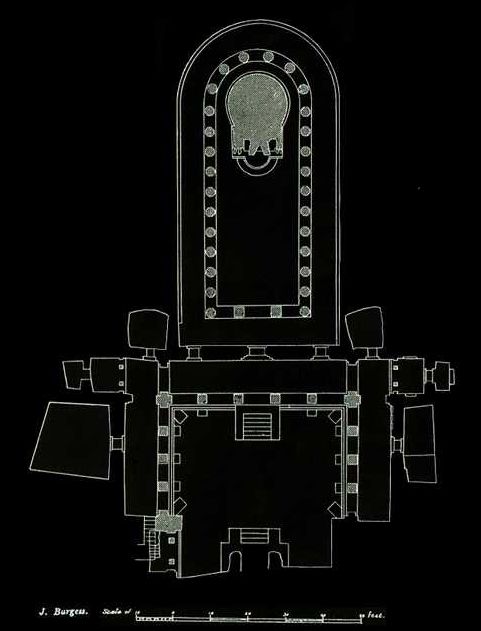
Cave 10: 1st floor plan

Cave 10: 2nd floor plan

Cave 10: Front view

Cave 10: Porch pillars
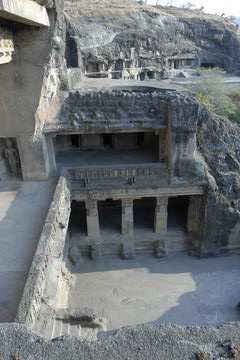
Cave 10: View from the second floor hallway to the courtyard
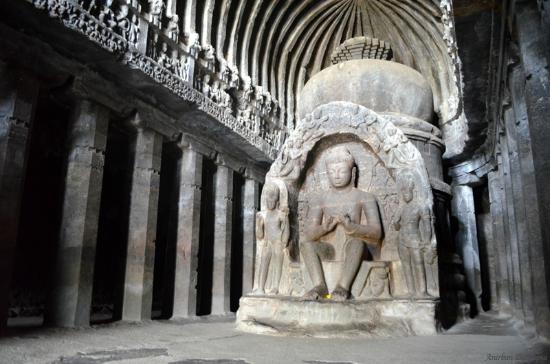
Cave 10: Domed main hall with Buddha statue sitting in front of the stupa
Cave symbol 11 – Do Tal Cave Pagoda
Cave 11 (Cave 11/Do Tal Cave) is a 3-storey high monastery cave (Vihara). The first floor includes: A large yard in front of the cave. The front corner of the yard has 2 rooms; A porch 31.1m long, 2.7m wide with 8 columns and stairs to the 2nd floor; Behind the porch there are 2 rooms, including an altar room. The 2nd floor includes: The porch overlaps the first floor porch, also with 8 columns. Behind the porch are 4 small rooms and a main room with a side hall with 2 columns and an altar. The 3rd floor includes: The porch is similar to the 2nd and 1st floors with 8 rows of columns; Behind the porch is a space carved deep inside, creating 3 layers of space: The lobby with 4 rows of columns; Great hall with row of 8 columns placed in the middle; Side hall with 2 columns and worship room inside. In addition, on the 3rd floor there are also a few rooms and small caves. The columns in Cave 11 seem to have not been built yet, the column segments have only been divided but not yet carved. The cave is said to be a Mahayana monastery with idols, cosmic symbols (mandala) carved into the walls and many idols related to Vajrayana Buddhism. This was the last Buddhist cave (along with Cave 12) to be built at the Ellora Complex. Images of goddess Durga (invincible god, Mother Goddess in Hinduism) and Ganesha (god of wisdom, happiness and success with elephant head and human body) carved on the wall of the hall show the cave This was later converted into a Hindu temple.
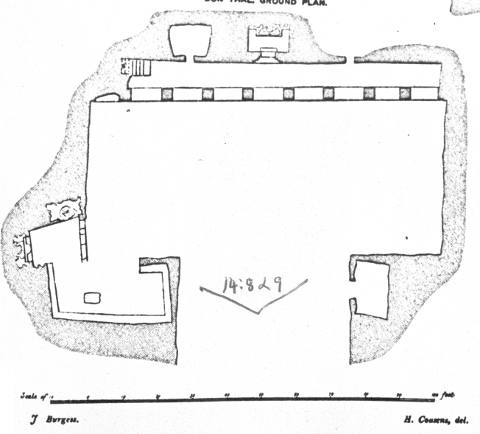
Cave 11: 1st floor plan
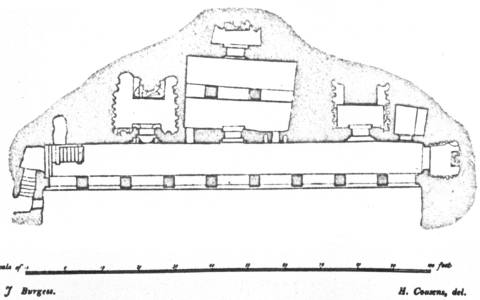
Cave 11: 2nd floor plan
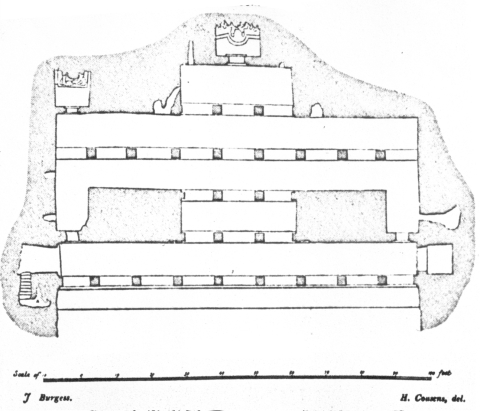
Cave 11: 3rd floor plan
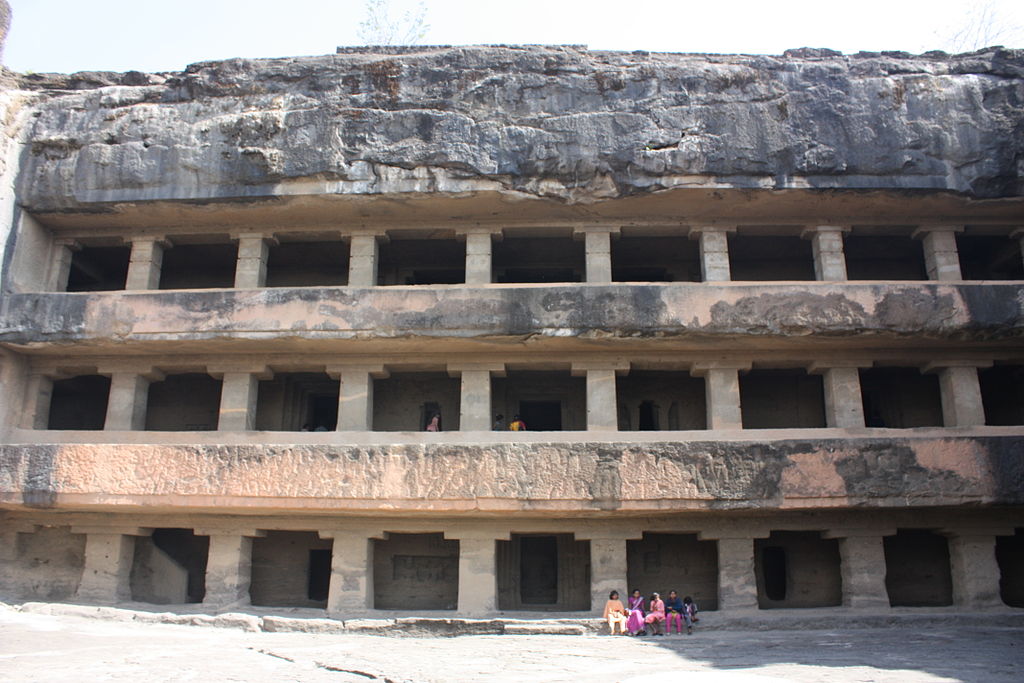
Cave 11: Front view
Cave 11: Corridor Cave
11: Water tank with decorative Buddha statue inside, on the right side of the courtyard
Cave 11: 1st floor hallway Cave 11: 2nd floor porch with stairs down to 1st floor Cave 11: 3rd floor hall with colonnades
Cave 11: Decorative paintings on the walls and ceiling 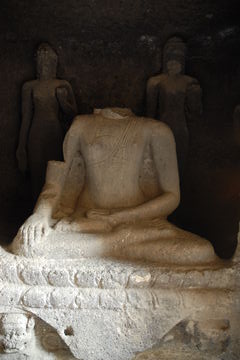
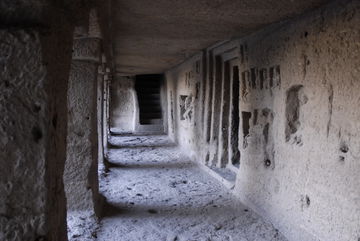
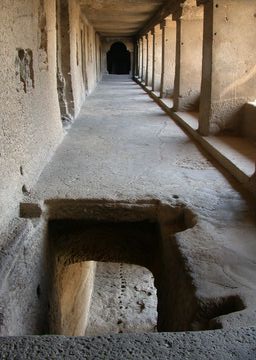
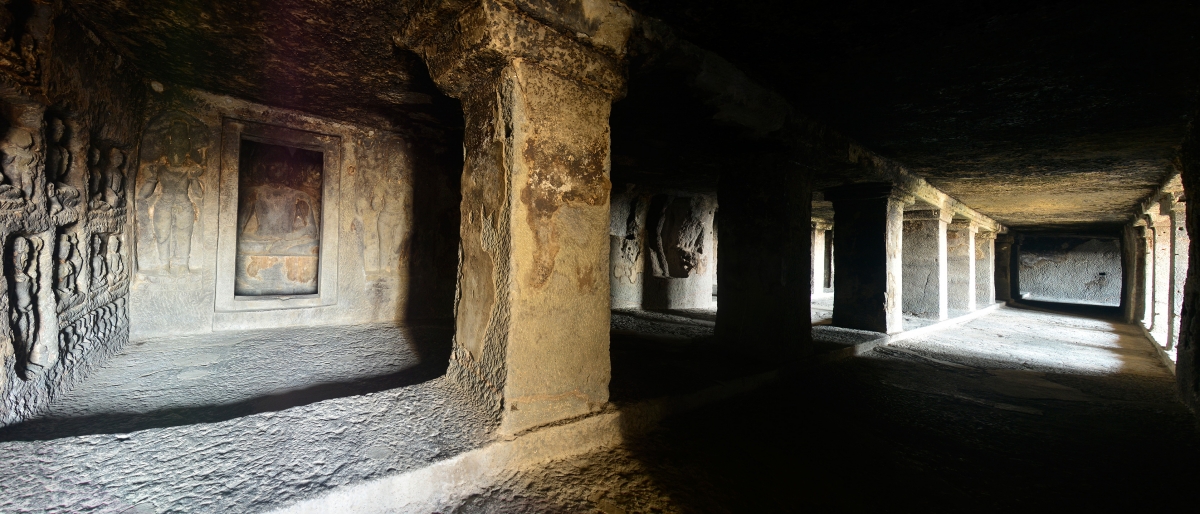
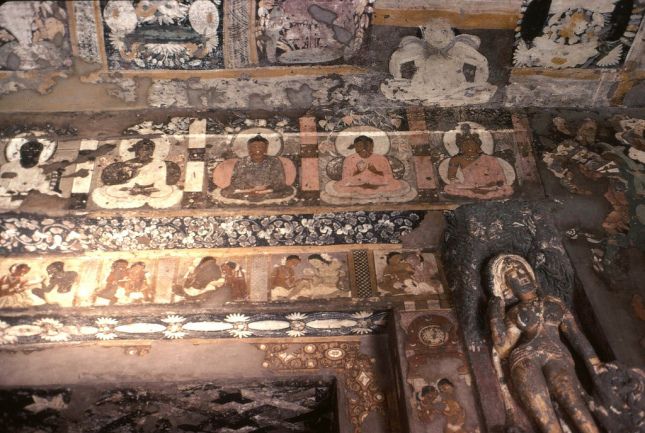
Cave symbol 12 – Tin Tal Cave Pagoda
Cave 12 (Cave 12/Tin Tal Cave) is a 3-story monastery cave (Vihara). The first floor includes: The front yard, surrounded by cliffs, has only one door. In the yard there is 1 large worship room and 1 small room; Great hall with 4 rows of columns, each row of 8 columns; Around the hall there are 12 rooms for lay people; In the middle of the hall is a small vestibule with 4 columns supporting the ceiling, the innermost is the worship room. Level 2 includes: Porch with 8 columns; The two ends of the porch are two small rooms and stairs. Next is a lobby with 4 columns and walls on both sides carved with Buddha statues. From here leads into the hall with 2 rows of columns, each row has 8 columns. Surrounding the hall are 17 rooms for lay people. Inside is a small vestibule with 2 columns, leading to the worship room. The 3rd floor includes: Large hall with 5 rows, each row has 8 columns. In one corner of the hall are stairs and a small room. Inside, similar to the 2nd floor, is a small lobby with 2 columns, leading to the worship room. The walls around the hall are decorated with many Buddha statues. Similar to the columns in Cave 11, the columns in Cave 12 seem to have not been built yet; only the column segments have been carved but have not yet been carved.
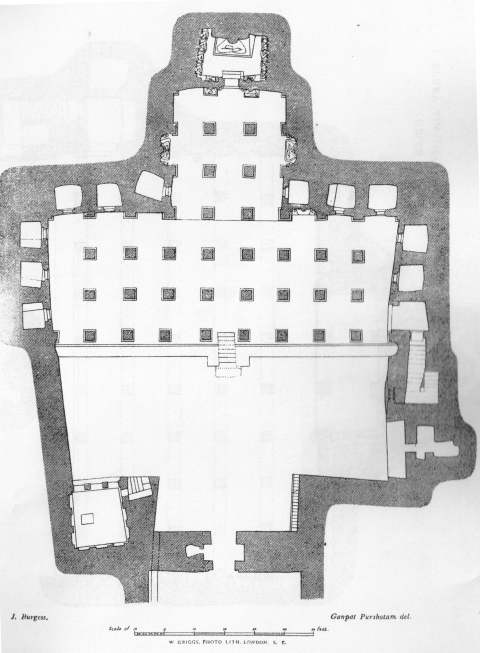
Cave 12: 1st floor plan
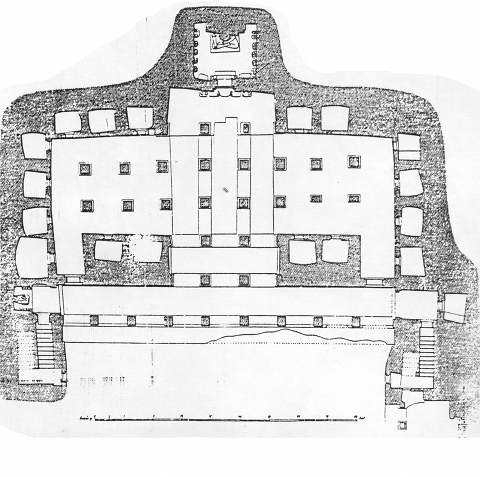
Cave 12: 2nd floor plan

Cave 12: 3rd floor plan
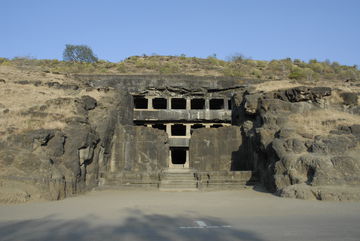
Cave 12: Front of the cave
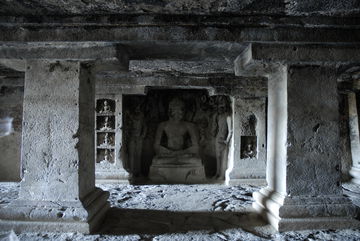
Cave 12: Worship room in the yard
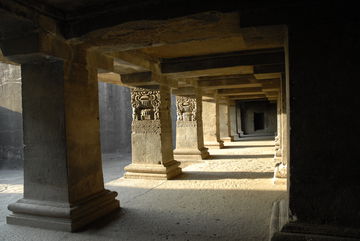
Cave 12: Main hall on the first floor
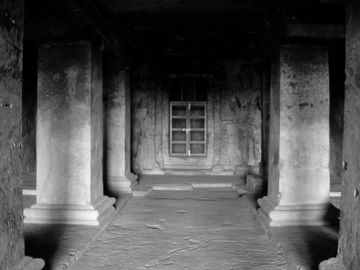
Cave 12: Main hall on the 2nd floor, in front of the worship room
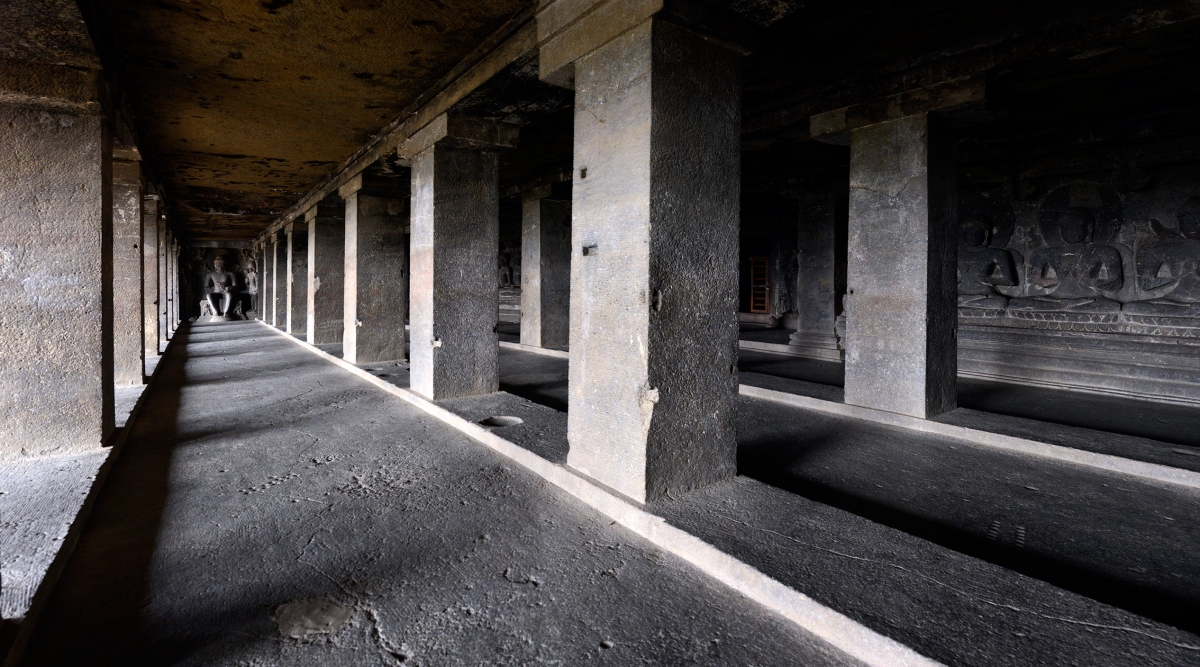
Cave 12: Main hall on the 3rd floor Cave 12: Main hall on the 3rd floor in front of the worship room
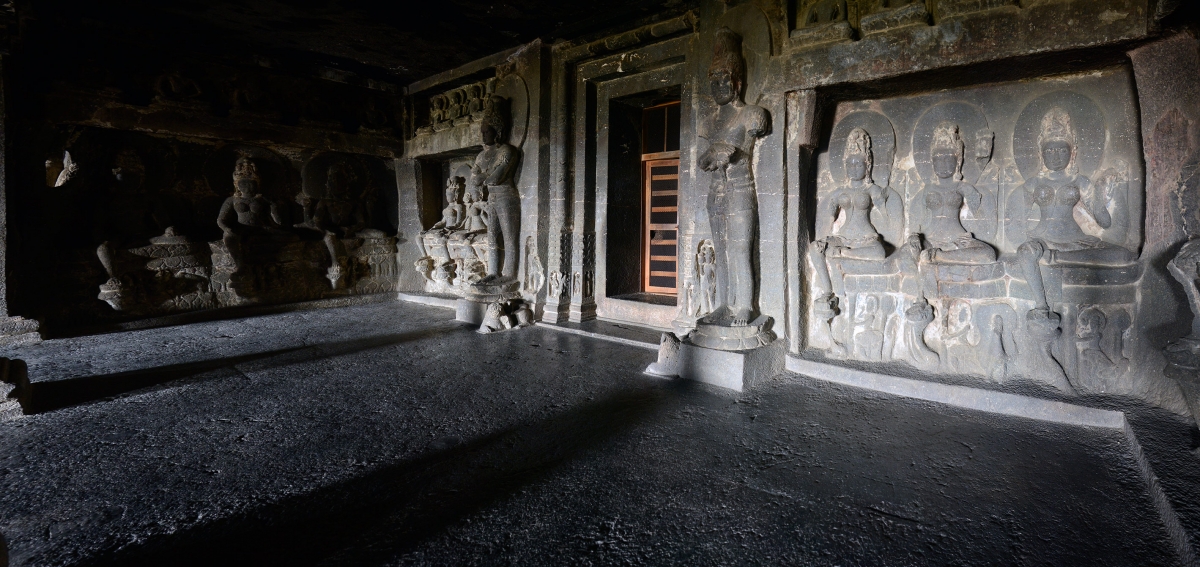
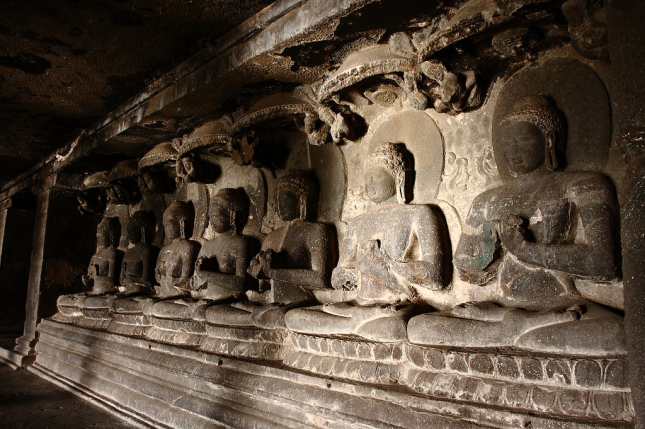
Cave 12: The main hall wall is decorated with 7 Buddhas on the 3rd floor
Hindu relics (Part 2)
Jain relics (Part 3)
The Ellora Cave Temple Complex Heritage is similar to other World Heritage Sites, currently being digitized and providing information on the web.
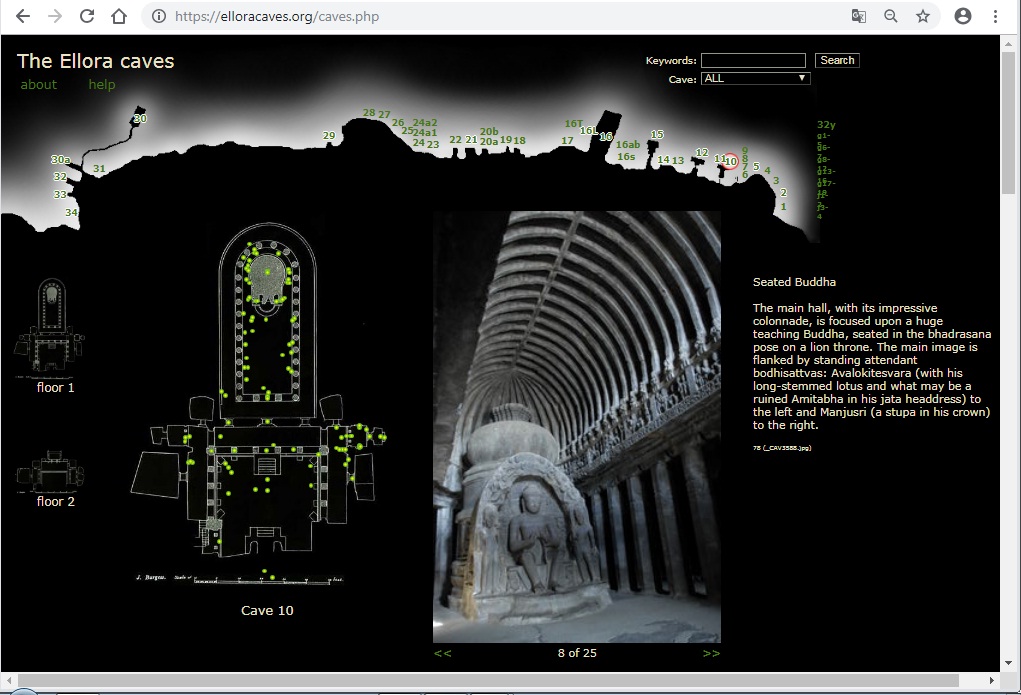
WEBSITE screen interface: The Ellora caves ( https://elloracaves.org/about.php )
Heritage Ellora Cave Temple Complex in Aurangabad, Maharashtra state, India is not only a unique creation of art and technology, but also illustrates the typical cultural spirit of tolerance of ancient India. The Ellora Cave Temple Complex (along with the Ajanta Cave Temple) is revered by Indians and is the most popular tourist destination in the state of Maharashtra, India.